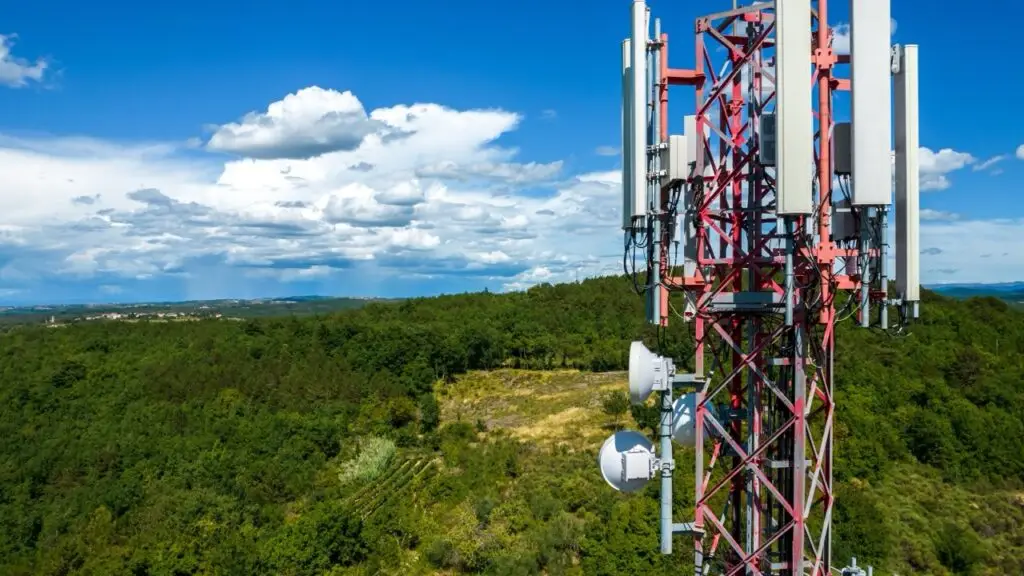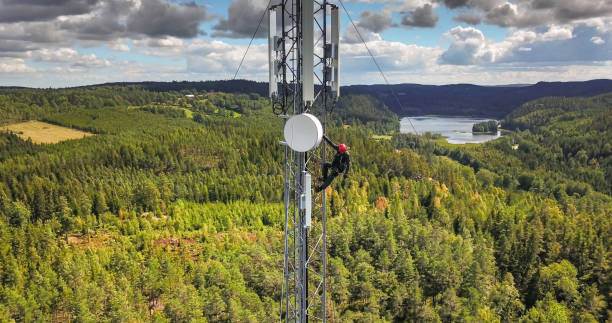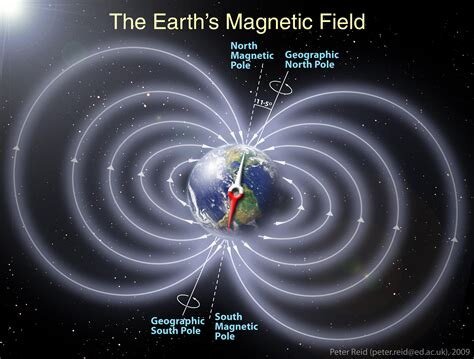It’s frustrating, to say the least. I’ve spent countless mornings hiking the rugged beauty of the mountains near my home, marveling at the raw connection to nature those moments bring. But lately, these pristine landscapes are increasingly marred by 5G towers poking through the treetops, their stark metallic structures a jarring reminder of humanity’s relentless push for connectivity. It makes me wonder: how much unchecked technological advancement is too much, particularly when it jeopardizes the natural world?
Electromagnetic fields (EMFs) have always been a part of life on Earth, from the Earth’s magnetic field to the sun’s solar radiation. Yet, the EMFs generated by our modern technology—non-native EMFs—are a different beast entirely. They permeate the airwaves and penetrate ecosystems, raising concerns about their impact on wildlife, plants, and even our health. This article explores the contrast between natural and non-native EMFs, the impact of artificial EMFs on nature, and how we can work toward a more harmonious coexistence with technology.
Natural EMFs: The Cosmic Symphony of Life
Long before cell towers and power lines dotted the landscape, natural electromagnetic fields played a foundational role in shaping life on Earth. These EMFs, produced by the planet itself and cosmic forces beyond, are essential to both biological systems and ecological balance.
The Earth’s Magnetic Field and Animal Navigation
The Earth’s geomagnetic field serves as a natural compass for many species. Birds, sea turtles, and even salmon rely on this invisible force to navigate long migrations. Research has demonstrated how migratory birds use specialized proteins called cryptochromes to sense magnetic fields. This ability allows them to traverse thousands of miles with astonishing accuracy, aligning their routes with the Earth’s magnetic currents.
Disruptions to these natural navigational cues—such as exposure to non-native EMFs—can have devastating consequences. Studies show that even weak radiofrequency fields can confuse birds, leading to erratic flight patterns and increased mortality.
Solar Radiation and the Schumann Resonance
Solar radiation is one of the most vital natural EMFs, providing energy for photosynthesis in plants and vitamin D synthesis in humans. The interplay between solar radiation and the Earth’s atmosphere also creates the Schumann resonance, a series of low-frequency waves that vibrate at 7.83 Hz. These frequencies mirror human brainwaves, promoting relaxation and balance. They’re a subtle reminder of our deep connection to the electromagnetic rhythms of nature.
Plants, Trees, and Electromagnetic Communication
It’s not just animals that are influenced by natural EMFs. Plants and trees emit their own bioelectric signals, which they use to adapt to environmental changes and communicate with one another. For example, when a tree is stressed by drought or pests, it sends bioelectric signals through its roots, warning nearby plants to prepare for similar threats. These electromagnetic interactions are fundamental to maintaining healthy ecosystems.
Non-Native EMFs: Artificial Currents in Nature’s Design
The natural harmony of EMFs began to change with the advent of industrialization. The introduction of power lines, radio waves, and, more recently, wireless networks has created an entirely new category of electromagnetic fields: non-native EMFs. Unlike the steady, low-frequency fields produced by the Earth, these artificial frequencies are often higher in intensity and biologically disruptive.
The Expansion of 5G Networks
The rollout of 5G technology represents a seismic shift in the electromagnetic landscape. Operating at millimeter-wave frequencies, 5G offers faster data transmission but at a cost. These shorter, more concentrated waves penetrate the environment in ways that earlier technologies didn’t. Research continues to demonstrate that 5G frequencies can interact with biological systems in unknown and potentially harmful ways. This is especially concerning for wildlife and ecosystems exposed to these waves in otherwise remote areas.

Urban Electrosmog and Rural Intrusions
In cities, the overlapping signals from Wi-Fi routers, cell towers, and power lines create a dense electromagnetic haze often referred to as “electrosmog.” This constant exposure has been linked to sleep disturbances, fatigue, and headaches in sensitive individuals. What’s troubling is that even rural areas, once considered safe havens, are now experiencing the intrusion of non-native EMFs. The sight of cell towers on mountaintops or deep in the forest underscores how pervasive these artificial currents have become.
Wildlife and Ecosystem Disruptions from Non-Native EMFs
The effects of non-native EMFs on wildlife are profound and far-reaching. Animals, plants, and even soil microbes are showing signs of disruption, which could have cascading consequences for entire ecosystems.
Birds and Migration Challenges
Birds are among the most affected by non-native EMFs. Their reliance on the Earth’s magnetic field for navigation makes them particularly vulnerable. A 2014 study found that migratory birds exposed to weak radiofrequency fields experienced disorientation, making it difficult for them to reach their destinations. This disorientation not only disrupts migration but also affects breeding and population stability.
Disruption of Marine Mammals by Artificial EMFs
Marine mammals, such as whales and dolphins, depend on geomagnetic cues and low-frequency sound waves for navigation, foraging, and communication. However, artificial EMFs from marine renewable energy developments (MREDs), including subsea cables and offshore wind farms, are increasingly disrupting these processes. Studies highlight that these EMFs can interfere with marine mammals’ magnetoreception, leading to disorientation and altered migration patterns critical for reproduction and feeding.
Additionally, the electromagnetic “noise” generated by subsea cables can mask natural cues, affecting prey detection and communication. As offshore energy projects expand, it’s crucial to implement EMF-reducing strategies, such as cable shielding, to minimize impacts on marine ecosystems while pursuing sustainable energy solutions.
Disruption of Plant Growth and Ecosystems by Artificial EMFs
Plants, like animals, rely on subtle bioelectric processes to grow, adapt, and thrive. Artificial EMFs from wireless technologies and other sources can interfere with these processes, impacting plant health and ecosystem dynamics. According to 2021 research, non-ionizing EMFs affect plants at a cellular level, disrupting bioelectric states essential for nutrient uptake, growth, and reproduction.
Low-level chronic EMF exposure has been shown to hinder seed germination, alter photosynthesis, and reduce overall vitality in plants. These disruptions can ripple through ecosystems, affecting food chains and biodiversity. As ambient EMF levels continue to rise due to 5G and other technologies, experts call for stricter regulations to address this novel form of pollution and its potential long-term effects on flora and ecosystems.
Bees and Pollination Threats from Artificial EMFs
Bees, vital pollinators responsible for 80% of insect-driven pollination, are increasingly at risk from anthropogenic electromagnetic fields (EMFs). A 2018 study published in Scientific Reports revealed that extremely low-frequency EMFs (ELF EMFs) from power lines significantly impair bees’ cognitive and motor abilities. Exposure to EMFs at ground-level intensities (20–100 µT) disrupted honey bees’ olfactory learning, memory retention, and flight dynamics, while higher intensities near power lines (up to 7000 µT) further exacerbated these effects.
These impairments reduce foraging success and feeding rates, critical for both individual and colony health. Given the already precarious state of global pollinator populations, such stressors may exacerbate declines in bee numbers, affecting biodiversity and agriculture. As EMF exposure continues to expand alongside technological development, mitigating its impact on bees is essential to preserving pollination services and ecological balance.
EMFs and Household Pets: Hidden Exposure Risks
While domesticated pets no longer live in “nature” in the traditional sense, their close proximity to human technology often makes them even more susceptible to EMF exposure. Surrounded by Wi-Fi routers, Bluetooth devices, and GPS collars, household pets experience significant, continuous exposure. A s2021 study found these levels generally below safety limits, but localized exposure near resting areas or prolonged use of tracking devices can still pose risks, particularly for young animals with developing tissues.
Aires Tech: Innovating EMF Protection
As awareness of the risks posed by non-native EMFs grows, innovative solutions like Aires Tech devices are providing hope. Aires Tech employs groundbreaking technology to modulate artificial EMFs, reducing their biological impact on both humans and the environment.
 How Aires Tech Works
How Aires Tech Works
Aires Tech devices use fractal-based technology to restructure electromagnetic waves, making them less harmful to biological systems. This approach doesn’t block EMFs but rather transforms their chaotic patterns into harmonious ones that align more closely with natural frequencies.
Applications for Human Health
From personal devices that protect individuals in high-EMF environments to larger systems designed for homes and workplaces, Aires Tech offers a range of solutions. For those concerned about the long-term effects of EMF exposure, these devices provide peace of mind and measurable health benefits.
Moving Toward Balance in a Technological Era
The rapid expansion of non-native EMFs poses challenges that cannot be ignored, but solutions are within reach. By embracing technologies like Aires Tech, practicing grounding, and advocating for responsible EMF management, we can strike a balance between progress and preservation.
The sight of 5G towers on mountaintops may serve as a wake-up call. It’s a reminder that while technology can enhance our lives, it must not come at the expense of the natural world. Together, we can work toward a future where cosmic currents and cable wires coexist in harmony, ensuring a healthier planet for all.









